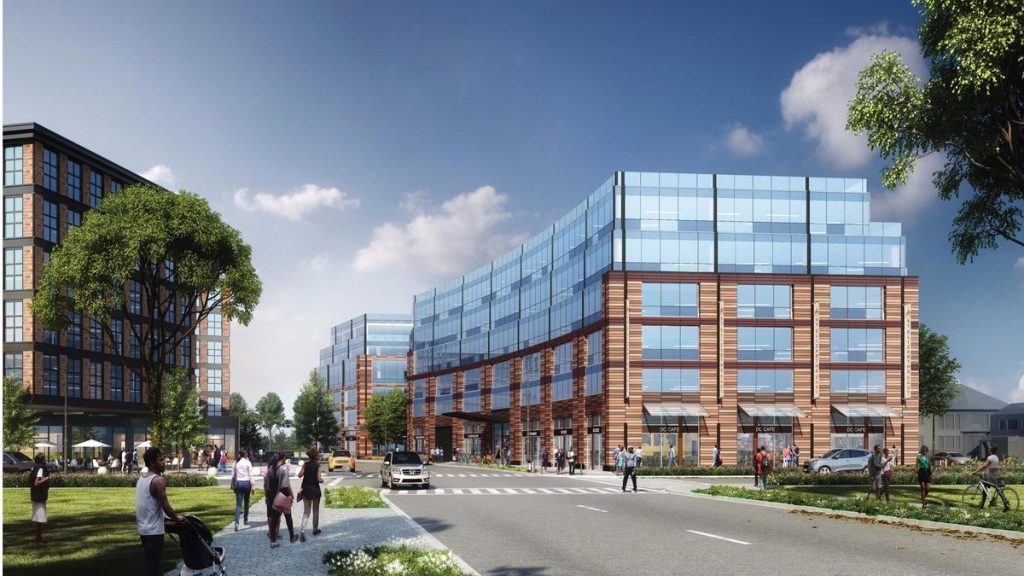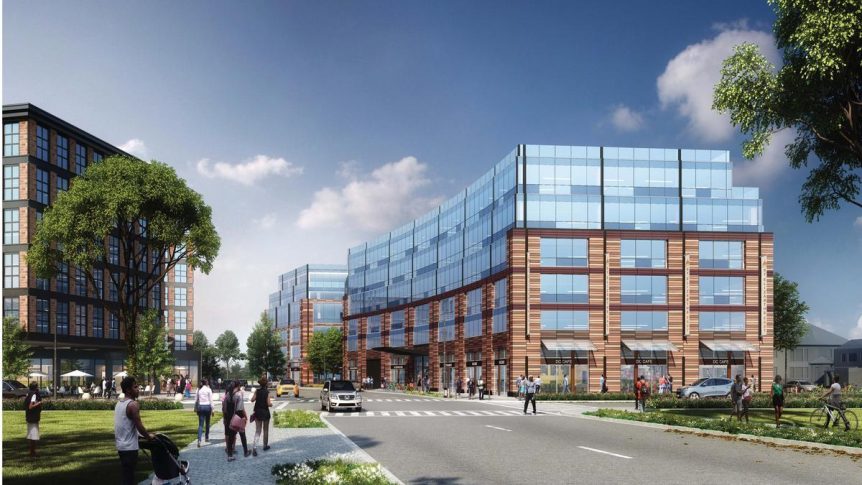WASHINGTON, DC | by Sara Gilgore | November 14, 2019
Original article can be found at: https://www.bizjournals.com/

Whitman-Walker will establish a new health center at St. Elizabeths East as part of the District’s bid to revitalize the Ward 8 campus and, its leaders hope, attract more of a health hub in a part of the city that sorely needs one.
The D.C. health nonprofit, which specializes in care for the city’s LGBTQ community, has signed a lease to occupy 116,000 square feet in a new building to be developed by District-based Redbrick. The building, slated for Parcel 17 — a vacant site on the southern edge of the campus — will be located between Alabama Avenue, Sycamore Drive and 12th Street SE near the Congress Heights Metro station.
The space will serve as a new state-of-the-art Southeast D.C. hub for Whitman Walker, whose longtime Max Robinson Center on Martin Luther King Jr. Avenue SE has showed its age and suffered from cramped quarters in recent years. The new center will serve both arms of the nonprofit: Whitman-Walker Health, which comprises primary care and other community health centers, and sibling organization Whitman-Walker Health System, a philanthropic arm and research institute.
Whitman-Walker estimates the buildout will cost around $15 million, all of which it will need to raise, according to system CEO Don Blanchon. Both groups will be involved with internal planning, construction and the buildout in the next few years, with a target opening in the second half of 2023.
The six-story building will house a pharmacy on the ground floor, where both the center and system will also share space for programming and bring on a community partner, though Blanchon declined to disclose specifics. Whitman-Walker Health will occupy three floors for primary care, behavioral health services, dental and substance misuse treatment services. And Whitman-Walker Health System will take up two floors for its institute, which includes the group’s work in education, policy and research.
These elements, along with youth services and administrative offices, will move from Whitman-Walker’s Max Robinson Center at 2301 Martin Luther King Jr. Ave. SE. The organization’s board must then decide what to do with that facility, which it owns. Whitman-Walker officials said they also plan to hire between 95 and 110 employees in the next couple of years as the organization expands these services in Southeast and expects to serve three times the number of patients annually there, from 5,000 to 15,000.
“We know that there are major disparities in wards 7 and 8. We’ve been working on them at our Max Robinson site, and we just really need more space — and we really need to plant a major flag and reposition ourselves for the future,” said Naseema Shafi, CEO of Whitman-Walker Health.
Whitman-Walker’s plans for a new Southeast location have been in the works for three years, ending a decadelong search for new space on the city’s east end, where it’s had a presence since 1993. Its other health hub, Liz, opened just this month along the 14th Street NW corridor comprising the former Elizabeth Taylor Medical Center.
“This is a big undertaking for Whitman-Walker. It’s a really important initiative for the community,” Blanchon said. “We have to be great stewards and engage people over the next three years. We have a lot of work to do.”
Its arrival to the massive Ward 8 campus could also help catalyze other health care development in the area and allow others “to see St. Elizabeths as a place where activity is happening,” said John Falcicchio, interim deputy mayor for planning and economic development. City officials are talking with other health care providers about locating there, he said, declining to name them.
It all comes as the District works toward a definitive agreement with George Washington University Hospital to run a planned new hospital — an acute-care facility to replace the ailing city-owned United Medical Center when it’s slated to deliver in 2022 — also on the St. E’s campus. That hospital, and Whitman-Walker’s new center, will function as part of a health care ecosystem the District is working to piece together there, Falcicchio said. And centers like Whitman-Walker’s will help “divert people from using the emergency room as their primary care provider,” he said.
Whitman-Walker has a history of working with GWU Hospital across the latter’s acute-care facility, where many of the former’s patients also receive care, as well as George Washington University’s schools of medicine and public health, Shafi said. While it’s too early to know what the interaction between the future health center and hospital could look like, Falcicchio said, “we would want to know how it ties in to other primary care providers in the neighborhood and in the wards” when a hospital deal is complete.
That long-negotiated operator agreement between the District and GWU Hospital likely won’t be finalized this year. A health care commission serving Mayor Muriel Bowser — formed in June to improve access to health care services on the city’s eastern end — will aim to deliver its report by the end of the year, Falcicchio said. That, he added, would then help inform a final agreement before it comes back to the D.C. Council for a vote.
Share this Post













